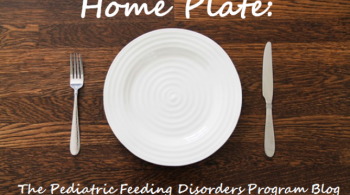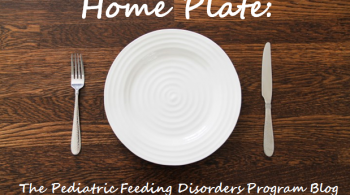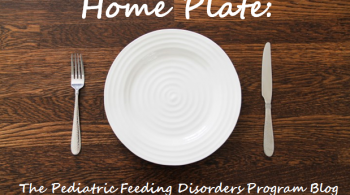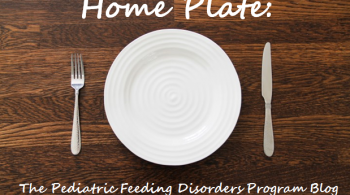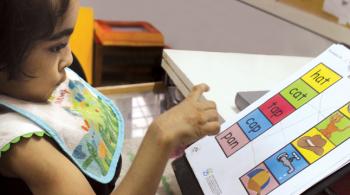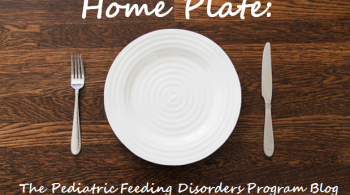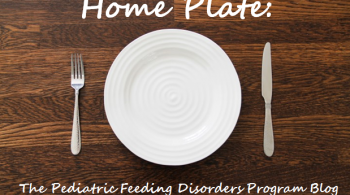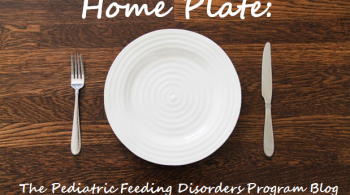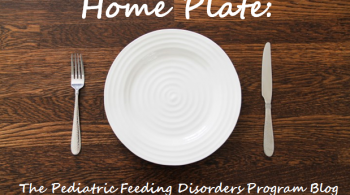If you’ve never been constipated, consider yourself lucky. Constipation can be uncomfortable to talk about, but it’s even more uncomfortable to experience firsthand. According to the National Institutes of Health, constipation is a condition in which a person has fewer than three bowel movements in a given week, or has hard, dry, and small bowel movements that are painful or difficult to pass. Many people also suffer from abdominal pain or bloating while constipated. Thus, it should come as no surprise that children who are constipated may be reluctant to eat, eat less than usual, or report that they aren’t hungry at mealtimes. In severe cases, they may also be more likely to vomit during or after meals. We noted in a previous entry that children who don’t consume enough fiber or fluids are especially prone to constipation, but there is certainly more to the story. Jody Robyler, a nurse practitioner in the Feeding Program at Kennedy Krieger, gave us the scoop.
How do I know if my child is constipated?
Most children have a bowel movement every day or every other day. Mild constipation may show up as straining more than usual and pushing out dry, hard stool or small pellets of stool. Ironically, some children may have loose or watery stools when they are constipated. This is caused by dry, hardened stool blocking portion of the colon, allowing only looser stools to pass by.
Infants’ bowel habits can vary widely, from several times per day to only once or twice per week, and constipation may first arise when solids are introduced. These changes in diet also affect the color and consistency of your baby’s stool.
Healthy stools are typically Type 3 or Type 4 on the Bristol Stool Chart (see below).
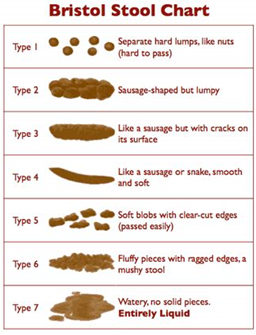
What causes constipation?
The purpose of the large intestine is to balance water in the body. If you don’t have enough fluids in the body, the large intestine will absorb more water from the stool, causing the stool to harden. Thus, dehydration often contributes to constipation. Similarly, constipation may occur if the intestines are moving too slowly, as there is more time to absorb water from the stool. Certain syndromes or diseases, such as hypothyroidism, are associated with sluggish or slow moving intestines. A lack of physical activity can also slow our normal bowel processes.
What should I do when my child is constipated?
It depends on the severity. There are many options available and we recommend consulting with your child’s pediatrician to determine which approach may be best. We’ve described some options below.
- Drink more water to increase hydration.
- Take a warm bath.
- Use a glycerin suppository. These are designed to soften the end of the hard, dry stool to allow passage. For solid suppositories, the temperature of the body will melt the suppository after it is held in place by the parent for 2-3 minutes. Liquid glycerin, which can be squirted into the rectum, is also available.
- Apply digital stimulation. Using a gloved hand, apply lubrication like K-Y jelly to one fingertip and press downward in a half circular motion on the back of the anus. This can relax the anal sphincter to help allow passage of the stool.
- Increase fiber intake. However, if constipation is chronic, fiber may make the impaction worse. Be sure the child is cleaned out of stool first and having daily stools before adding more fiber to the diet.
- Use medications:
- Stool Softeners, such a Miralax or Colace, helps to keep water in the stool and not become dry and hard.
- Laxatives, such as Senna or Lactulose, stimulate peristalsis. This means the intestines contract and move food along.





